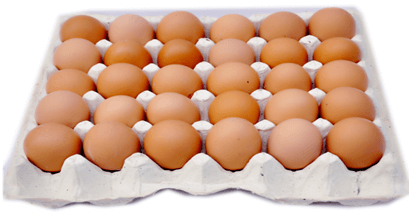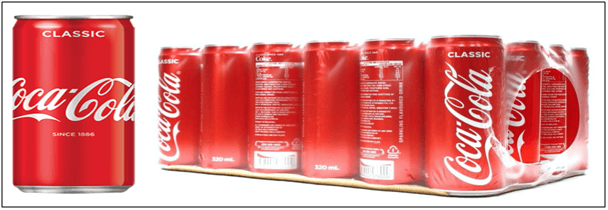By ensuring for the quality of a product is not affected, it is essential to adopt high-profile distribution logistics, considering that typically we not deal only with our product, but with aspects related to it. Such as delivery precision, traceability, consumer protection, and also seasonality of flows. The food industry depends on timely supply of raw materials, and the smooth therefore transportation and logistics is important.
Table of Contents
The Fundamental Driver for Food Logistics
Due to foods products have a limited shelves life, logistics solutions, and transportation must be time sensitive. Many of the raw materials spoiled or rotten example, fish, and vegetables fruits do not last long even if stored in climate controlled facilities. Therefore, speedy delivery needs to avoid deterioration. The same applies to finish products.Preservation of Quality in all the industries, without good logistics you can have negative repercussions on business costs, customer service, and the company’s reputation and even in various processing stages.
Company invests in services and quality distribution logic, the more benefits it will have and fewer costs, especially in the medium-long term.
Three Major Functions of Food Packaging
- Protection – Packaging design ensures the product is adequately protected from the wide range of environmental hazards, mechanical, and manual it will encounter on its distribution journey. Meanwhile, improper packaging may result in damage, and also too much packaging can incur additional expenses, ranging from excess transportation costs to increase material costs.
- Containment – A product must be designed for contained within a series of ever-larger packages to reduce in-transit damage. As it moves or stops along the way, containers have specific space available and potential for damage.
- Communication – As consumers shop amongst thousands of products in a given category, point of sale engagement straight encourages them to interact with product brands and overcome visual indifference between brands on their own volition. Consumer’s goods packaging has a huge marketing value.
Types of Food Packaging
- Trays – It’s what drinks, plant seeds, and meats can be carried in. To keep the product in place they are mostly flatting with raised edges.
- Bags – Universally known well as bagged snacks and fruits. Bagging separates the food from the air environment to keep it fresh.
- Boxes – Used for the easiest form to stock, and for transportation of a food product.
- Cans – An excellent way of preserving and Most cans are made of thin metal or steel
- Cartons – Most well-known is the egg carton which is molded to the shape of the egg to add protection and cartons are also made of corrugating fiberboard.
- Flexible Packaging – Protects the food and create an adequate means of transporting foods. As well, protect from the environment.
- Wrappers – Used for individual items. Provide protection between the food, and a person’s hands or the food, and the environment.



Three Levels of Packaging
- Primary Packaging – Materials that make direct physical contact with product and provide ample protection for your product. Purpose to classify product labels as primary packaging, such as the since label and nutrition facts label often attached to food containers.
- Secondary Packaging – Used for marketing purposes, bundles, and protections. Product combines multiple items together, such as the box that hold multiple cans of soda together in one convenient pack.
- Tertiary Packaging – Main goal is to provide protection during storage and shipping. Combines smaller containers holding the products to a full pallet setup. Protect to make sure products make it to their final destination without a scratch.


Distribution Hazards and Importance of Packaging
Poor packaging will hurt product image, and sales. Packaging comes from full clarity into precisely what distribution hazards need to be protected against while a unit is in transit or across all modes. Almost all distribution hazards stand with these four categories:
- Handling – Handled by machinery and human hands. Damage can result from dropping, or rough handling. Primary packaging takes over when individual units are picked to ship directly to end consumers while Secondary packaging protects merchandise from manufacturers.
The full content is only visible to SIPMM members
Already a member? Please Login to continue reading.
References
Evelyn Seow Pick Ling, DPSM.(2020). “Global Sourcing Considerations for Food Retail Distribution”. Retrieved from https://publication.sipmm.edu.sg/global-sourcing-considerations-food-retail-distribution/, accessed 18/12/2020.
Kate Lim Boon Yar, DLSM.(2020). “Effective Packaging for Outbound Logistics”. Retrieved from https://publication.sipmm.edu.sg/effective-packaging-outbound-logistics/, accessed 18/12/2020.
Rick Lingle , Lisa McTigue Pierce.(2020). “Best in New Food and Beverage Packaging”. Retrieved from https://www.packagingdigest.com/food-beverage/best-new-food-and-beverage-packaging, accessed 19/12/2020.
Sarkina.(2019). “Packaging Knowledge”. Retrieved from https://www.sarkina.com/blog/post/the-three-levels-of-packaging, accessed 19/12/2020.
Shyanne Lim.(2019). “Food Service Distributors in Singapore”. Retrieved from https://shyannelim78.medium.com/food-service-distributors-in-singapore-5dcf4fcb374c, accessed 19/12/2020.
Wong Siew Ing, DPSM.(2019). “Key Issues for Integrating Warehousing and Food Distributions”. Retrieved from https://publication.sipmm.edu.sg/key-issues-integrating-warehousing-food-distributions/, accessed 19/12/2020.

